

Cuvitru

Ask a doctor about a prescription for Cuvitru

How to use Cuvitru
PATIENT INFORMATION LEAFLET
Enclosed patient information leaflet: user information
Cuvitru, 200 mg/ml, solution for injection
Human normal immunoglobulin
Read the leaflet carefully before using the medicine, as it contains important information for the patient.
- Keep this leaflet, you may need to read it again.
- If you have any further questions, ask your doctor, pharmacist, or nurse.
- This medicine has been prescribed for you only. Do not pass it on to others. It may harm them, even if their symptoms are the same as yours.
- If you experience any side effects, including any not listed in this leaflet, please tell your doctor, pharmacist, or nurse. See section 4.
Table of contents of the leaflet
- 1. What is Cuvitru and what is it used for
- 2. Important information before using Cuvitru
- 3. How to use Cuvitru
- 4. Possible side effects
- 5. How to store Cuvitru
- 6. Contents of the pack and other information
1. What is Cuvitru and what is it used for
What is Cuvitru
Cuvitru belongs to a class of medicines called "human normal immunoglobulins".
Immunoglobulins are also known as antibodies and are found in the blood of healthy individuals.
Antibodies are part of the immune system (which provides natural protection against infection)
and help the body fight infections.
How Cuvitru works
Cuvitru is made from the blood of healthy individuals. The medicine works in the same way as
the natural immunoglobulins found in the blood.
What Cuvitru is used for
Cuvitru is used in patients with a weakened immune system who do not have enough antibodies in their blood and are prone to frequent infections. Regular administration of the appropriate dose of Cuvitru can increase abnormally low levels of immunoglobulins to a normal range (replacement therapy).
Cuvitru is prescribed
- to patients with a congenital lack of antibody production (primary immunodeficiency syndromes);
- to patients who, due to a weakened immune system resulting from other diseases or other types of treatment (secondary immunodeficiency syndromes), have severe or recurrent infections.
2. Important information before using Cuvitru
When NOT to use Cuvitru:
- If the patient is allergic to immunoglobulins or any of the other ingredients of this medicine (listed in section 6).
- If the patient has antibodies against immunoglobulin A (IgA). This situation may occur in the case of IgA deficiency. Cuvitru contains trace amounts of IgA, so the patient may experience an allergic reaction.
- Into a blood vessel (intravenously) or into a muscle (intramuscularly).
Warnings and precautions
Before starting treatment with Cuvitru, discuss it with your doctor, pharmacist, or nurse.
Leaving Cuvitru in syringes coated with silicone polymer for more than two hours may lead to the formation of solid particles. You must strictly follow the detailed instructions given in section 3 "Method and route of administration" of this leaflet.
Allergic reactions
The patient may be allergic to immunoglobulins without knowing it. Allergic reactions, such as a sudden drop in blood pressure or anaphylactic shock (a sudden drop in blood pressure combined with other symptoms such as throat swelling, difficulty breathing, and skin rash), are rare, but may occur occasionally, even if the patient has not had any problems with similar medicines before. People with IgA deficiency and the presence of anti-IgA antibodies have an increased risk of allergic reactions. Before starting treatment, inform your doctor or nurse about IgA deficiency. Cuvitru contains residual amounts of IgA, which may increase the risk of an allergic reaction. Subjective or objective symptoms of these rare allergic reactions include:
- dizziness, dizziness, or fainting;
- skin rash and itching, swelling of the mouth or throat, difficulty breathing, wheezing;
- abnormal heartbeat, chest pain, bluish discoloration of the lips or fingers and toes;
- blurred vision.
The doctor or nurse will start the Cuvitru infusion slowly and will closely monitor the patient during the first few infusions to detect and treat any potential allergic reactions immediately.
►
If any of these symptoms occur during the infusion, inform your doctor or nurse immediately. They will decide whether to reduce the infusion rate or stop it altogether.
Monitoring during infusion
Some side effects may occur more frequently in the following situations:
- first-time use of Cuvitru;
- previous use of another immunoglobulin and switching to Cuvitru;
- a long interval since the last administration of Cuvitru. ► In such cases, the patient will be closely monitored during the first infusion and for the first hour after its completion.
In other cases, it is recommended to monitor the patient during the infusion and for at least 20 minutes after administration.
Special patient groups
The doctor will exercise particular caution in the case of overweight, elderly, diabetes, or if the patient has high blood pressure, low blood volume (hypovolemia), or vascular problems (vascular disease). In these conditions, immunoglobulins may increase the risk of heart attack, stroke, pulmonary embolism, or deep vein thrombosis, although only in very rare cases.
The doctor will also exercise particular caution if the patient has or has had kidney problems or is taking medicines that may harm the kidneys (nephrotoxic medicines), as there is a high risk of acute kidney failure.
Aseptic meningitis (AMS)
Infusions of immunoglobulin products, including Cuvitru, may cause meningitis.
Discontinuation of immunoglobulin therapy may lead to remission of the AMS syndrome within a few days. The syndrome usually occurred within a few hours to 2 days after immunoglobulin administration.
You should contact your doctor if you experience the following subjective and objective symptoms after taking Cuvitru: severe headache, neck stiffness, drowsiness, fever, nausea, vomiting, and sensitivity and discomfort related to light. The doctor will decide whether further tests are needed and whether Cuvitru administration should be continued.
Hemolysis (red blood cell destruction)
Cuvitru contains antibodies against blood groups, which may cause red blood cell destruction and hemolytic anemia.
Effect on blood test results
Cuvitru contains many different antibodies, some of which may affect the results of blood tests (serological tests).
►
Before any blood test, inform your doctor that you are taking Cuvitru.
Home treatment
Patients who self-administer the medicine at home and/or their caregivers will be trained to detect early signs of side effects, especially allergic reactions. During the infusion, the patient or their caregiver should observe whether the first signs of side effects appear (see section 4, "Possible side effects").
►
If any side effects occur, the patient or caregiver must stop the infusion immediately and contact the doctor.
►
In case of a severe side effect, the patient or caregiver must immediately call for medical help as in an emergency.
Information about the origin of Cuvitru
Cuvitru is made from human plasma (the liquid part of the blood). During the production of medicines from blood or human plasma, measures are taken to prevent the transmission of infections to patients.
These include:
- careful selection of blood and plasma donors to ensure that donors at risk of infection are not included, and
- testing each donation and plasma pool for viruses/infections;
- including steps in the blood and plasma processing that can inactivate or remove viruses.
Despite these measures, it cannot be completely ruled out that the risk of transmitting an infection when administering medicines made from human blood or plasma, including unknown or new viruses or other types of infections, is eliminated.
The measures taken are considered effective for enveloped viruses, such as human immunodeficiency virus (HIV), hepatitis B and C viruses, and for non-enveloped viruses, such as hepatitis A and parvovirus B19.
Immunoglobulins have not been associated with hepatitis A or parvovirus B19 infections, probably because the antibodies against these infections contained in Cuvitru have a protective effect.
It is strongly recommended to record the following data in the treatment diary each time Cuvitru is administered:
- date of administration,
- batch number of the medicine, and
- injected volume, infusion rate, number, and location of injection sites.
Children and adolescents
The same indications, dose, and infusion frequency as for adult patients apply to children and adolescents (from 0 to 18 years of age).
Use of a higher dose of Cuvitru than recommended
If it is suspected that a higher dose of Cuvitru than recommended has been taken, the doctor should be informed as soon as possible.
Missing a dose of Cuvitru
Do not take a double dose of Cuvitru to make up for a missed dose. If a dose of Cuvitru is missed, the doctor should be informed as soon as possible.
3. How to use Cuvitru
This medicine should always be used as directed by your doctor. If you are unsure, ask your doctor.
Cuvitru should be administered subcutaneously (by subcutaneous infusion).
The administration of Cuvitru will be started by a doctor or nurse, but the patient may be allowed to use the medicine at home after receiving several initial infusions under medical supervision and proper training of the patient (and/or their caregiver). The decision to allow the patient to use Cuvitru (e.g., using an infusion pump or administering manually using a syringe) at home is made by the patient together with the doctor. Do not start using Cuvitru at home before receiving full instructions.
Dosage
The doctor will calculate the appropriate dose for the patient based on the patient's weight, previous treatment, and response to that treatment.
The doctor will determine whether a loading dose (for adults or children) of at least 1.0-2.5 ml/kg body weight is needed, divided into several days. As a result, Cuvitru will be administered at regular intervals, starting from once a day to once every two weeks; the cumulative monthly dose will be approximately 1.5 to 5 ml/kg body weight (in the case of primary immunodeficiency syndromes) or approximately 1.0 to 2.0 ml/kg body weight (in the case of secondary immunodeficiency syndromes). The doctor may also adjust the dose based on the response to treatment.
Do not change the dose or dosing without consulting your doctor. If you think that Cuvitru should be taken less or more frequently, discuss this with your doctor. If you miss a dose of Cuvitru, inform your doctor as soon as possible.
Starting treatment
Treatment will be started by a doctor or nurse experienced in treating patients with weakened immune systems and training patients to administer treatment at home. The patient will be closely monitored throughout the infusion and for at least 1 hour after its completion to determine how well the patient tolerates the medicine. Initially, the doctor or nurse will use a low infusion rate and will gradually increase it during the first infusion and subsequent infusions. After the doctor or nurse has determined the appropriate dose and infusion rate for the patient, the patient may be allowed to use the medicine at home.
Home treatment
Cuvitru can be administered by the patient or their caregiver. The patient will be trained by a doctor or nurse experienced in advising and treating such patients.
The doctor or nurse will accompany the patient during several initial administrations of the medicine.
The patient or their caregiver will receive training in:
- aseptic infusion techniques,
- use of the administration device (if necessary),
- keeping a treatment diary, and
- measures to be taken in case of severe side effects.
To ensure effective treatment, carefully follow the instructions given by your doctor regarding the dose, infusion rate, and administration schedule of Cuvitru.
Method and route of administration
Selection of infusion sites
Suggested areas for subcutaneous infusion of Cuvitru are the abdomen, thighs, upper arms, or lower back. Cuvitru can be administered at multiple infusion sites. Infusion sites should be at least 10 cm apart. Avoid: areas over bones, with visible blood vessels, scars, or areas of inflammation (irritated) or infection.
Rotate the infusion sites during each administration as recommended by your doctor or nurse.
In case of infusion using a device:
Multiple subcutaneous infusion sites can be used at the same time using a multi-needle set. The amount of product administered to a given infusion site may vary, and doses exceeding 30 ml can be divided according to the patient's preference.
In case of manual administration:
Cuvitru can be administered using a syringe at one infusion site. If additional infusion sites are required, a new sterile needle should be used. The amount of product administered to a given infusion site may vary, and doses exceeding 30 ml can be divided according to the patient's preference.
Infusion rate
The doctor will decide on the appropriate technique and infusion rate for the patient, taking into account the dose used, dosing frequency, and the patient's tolerance to the medicine.
In case of infusion using a device:
The recommended initial infusion rate is 10 ml per hour per infusion site. If the infusion is well tolerated, the infusion rate can be increased at intervals of at least 10 minutes to a maximum of 20 ml per hour per infusion site during the first two infusions.
In subsequent infusions, the infusion rate can be increased based on tolerance.
In case of any further doubts about the use of this medicine, consult your doctor, pharmacist, or nurse.
In case of manual administration:
Consult your doctor. Administration should be started at a rate that does not cause discomfort. The infusion should never be painful. The recommended maximum infusion rate is approximately 1-2 ml per minute. It may be found that larger infusion volumes are tolerated at some infusion sites than at others.
In case of any further doubts about the use of this medicine, consult your doctor, pharmacist, or nurse.
The following is a detailed instruction for use.
Do not use Cuvitru at home before receiving full instructions and training from a doctor or nurse.
Preparing Cuvitru vials:
- Remove Cuvitru from the box. If the product is stored in the refrigerator, allow the vials to reach room temperature. This may take up to 90 minutes.
- Do not heat or microwave.
- Do not shake the vials.
|
| 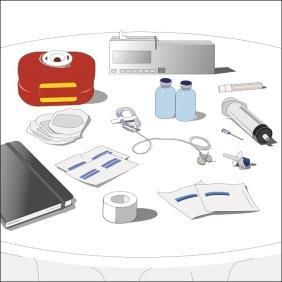   |
| 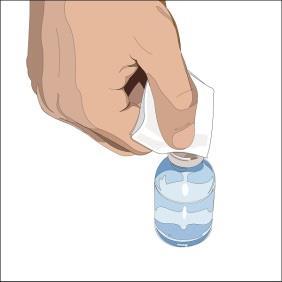  |
|  |
|  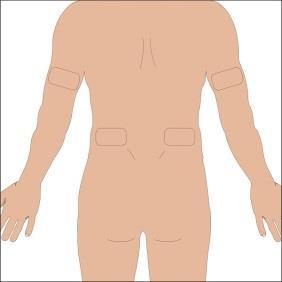 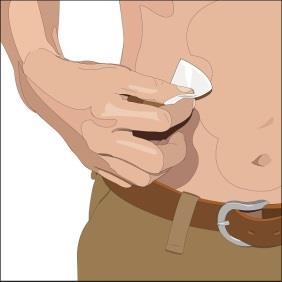 |
| 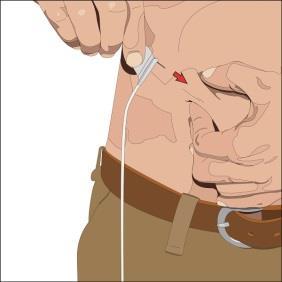 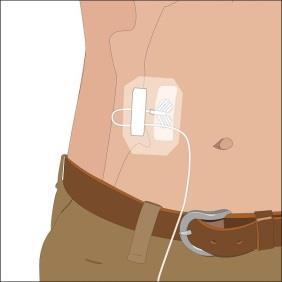 |
| |
| 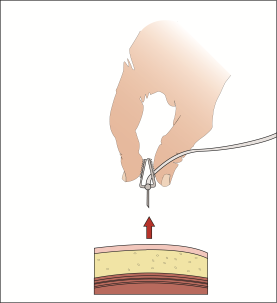 |
|
Use in children and adolescents
The same indications, dose, and infusion frequency as for adult patients apply to children and adolescents (from 0 to 18 years of age).
Use of a higher dose of Cuvitru than recommended
If it is suspected that a higher dose of Cuvitru than recommended has been taken, the doctor should be informed as soon as possible.
Missing a dose of Cuvitru
Do not take a double dose of Cuvitru to make up for a missed dose. If a dose of Cuvitru is missed, the doctor should be informed as soon as possible.
4. Possible side effects
Like all medicines, Cuvitru can cause side effects, such as chills, headache, dizziness, fever, vomiting, allergic reactions, nausea, joint pain, low blood pressure, and lower back pain of moderate severity, although not everybody gets them.
Some side effects, such as headache, chills, or body pain, can be reduced by slowing down the infusion rate.
Serious side effects
Infusions of medicines like Cuvitru can occasionally lead to serious, though rare, allergic reactions. It is possible for a sudden drop in blood pressure to occur, and in single cases, anaphylactic shock. Doctors are aware of the possibility of these side effects and will monitor the patient during the first infusions and after their completion.
You must inform your doctor or nurse immediately if you experience any of the following symptoms:
- dizziness, dizziness, or fainting;
- skin rash and itching, swelling of the mouth or throat, difficulty breathing, wheezing;
- abnormal heartbeat, chest pain, bluish discoloration of the lips or fingers and toes;
- blurred vision.
When taking Cuvitru at home, the patient may perform the infusion in the presence of a caregiver who can help the patient detect allergic reactions, interrupt the infusion, and call for help if needed.
Information about the risk of allergic reactions and the use of Cuvitru at home can be found in section 2 of this leaflet.
Very common side effects (may affect more than 1 in 10 people):
- headache
- diarrhea and nausea
- redness and pain at the infusion site
- fatigue
Common side effects (may affect up to 1 in 10 people):
- dizziness, migraine, and drowsiness
- low blood pressure
- abdominal pain
- itching and rash
- muscle pain
- swelling, itching, rash, and bruising at the infusion site
- pain
Uncommon side effects (may affect up to 1 in 100 people):
- burning sensation
- lower abdominal pain
- swelling at the infusion site
- positive blood test result for antibodies
Side effects with unknown frequency (frequency cannot be estimated from the available data):
- meningitis (aseptic meningitis)
Side effects observed with similar medicines
During subcutaneous infusions of human normal immunoglobulin, the following side effects have been observed. Although these side effects have not been observed with Cuvitru so far, it is possible that they may occur in patients taking this medicine.
- Tingling
- Tremor
- Increased heart rate
- Shortness of breath
- Vocal cord problems
- Chest pain
- Hardening and/or feeling of warmth at the infusion site
Reporting side effects
If you experience any side effects, including any not listed in this leaflet, please tell your doctor, pharmacist, or nurse. Side effects can be reported directly to the Department of Drug Safety Monitoring of the Office for Registration of Medicinal Products, Medical Devices, and Biocidal Products
Al. Jerozolimskie 181C
02-222 Warsaw
tel.: 22 49 21 301
fax: 22 49 21 309
Website: https://smz.ezdrowie.gov.pl
Side effects can also be reported to the marketing authorization holder.
By reporting side effects, you can help provide more information on the safety of this medicine.
5. How to store Cuvitru
Keep this medicine out of the sight and reach of children.
Do not use this medicine after the expiry date stated on the label and carton after EXP.
The expiry date refers to the last day of the month stated.
Do not use this medicine if you notice that the solution is cloudy, contains solid particles, or has changed color.
Store the vials in the outer packaging to protect from light.
Do not store above 25°C.
Do not freeze.
If the product is stored in the refrigerator, unopened vials must be removed from the refrigerator and left at room temperature for at least 90 minutes before use. Do not use heating devices, including microwaves.
6. Contents of the pack and other information
What Cuvitru contains
- The active substance of Cuvitru is human normal immunoglobulin.
- 1 ml of Cuvitru contains 200 mg of human protein; at least 98% of this is immunoglobulin G (IgG).
- The other ingredients are glycine and water for injections.
What Cuvitru looks like and contents of the pack
Cuvitru is a solution for injection in vials of 5, 10, 20, 40, or 50 ml. The solution is clear and colorless, pale yellow or pale brown.
Each 5 ml vial contains: 1 g of human normal immunoglobulin.
Each 10 ml vial contains: 2 g of human normal immunoglobulin.
Each 20 ml vial contains: 4 g of human normal immunoglobulin.
Each 40 ml vial contains: 8 g of human normal immunoglobulin.
Each 50 ml vial contains: 10 g of human normal immunoglobulin.
Pack sizes:
1, 10, or 20 vials of 5 ml solution for injection
1, 10, 20, or 30 vials of 10 ml solution for injection
1, 10, 20, or 30 vials of 20 ml solution for injection
1, 5, 10, or 20 vials of 40 ml solution for injection
1 vial of 50 ml solution for injection.
Not all pack sizes may be marketed.
Marketing authorization holder
Takeda Pharma Sp. z o.o.
ul. Prosta 68
00-838 Warsaw
Tel: +48223062447
[email protected]
Manufacturer
Baxalta Belgium Manufacturing SA
Boulevard René Branquart 80
7860 Lessines
Belgium
This medicinal product is authorized in the Member States of the European Economic Area under the following names:
Austria: Cuvitru 200 mg/ml lnjektionslösung zur subkutanen Anwendung
Belgium, France: Cuvitru 200 mg/ml solution injectable par voie sous-cutanée
Czech Republic, Denmark, Finland, Germany, Greece, Italy, Norway, Poland: Cuvitru
Ireland, United Kingdom: Cuvitru 200 mg/ml solution for subcutaneous injection
Netherlands: Cuvitru 200 mg/ml, oplossing voor subcutane injectie
Slovakia, Sweden: Cuvitru 200 mg/ml
Spain: Cuvitru 200 mg/ml, solución inyectable subcutánea
Date of last revision of the leaflet:01/2024
- Country of registration
- Active substance
- Prescription requiredYes
- Manufacturer
- ImporterBaxalta Belgium Manufacturing S.A.
- This information is for reference only and does not constitute medical advice. Always consult a licensed doctor before taking any medication. Oladoctor is not responsible for medical decisions based on this content.
- Alternatives to CuvitruDosage form: Solution, 165 mg/mlActive substance: immunoglobulins, normal human, for extravascular adm.Prescription requiredDosage form: Solution, 200 mg/mlActive substance: immunoglobulins, normal human, for extravascular adm.Manufacturer: Instituto Grifols, S.A.Prescription requiredActive substance: immunoglobulins, normal human, for intravascular adm.Manufacturer: Baxalta Belgium Manufacturing S.A.Prescription required
Alternatives to Cuvitru in other countries
The best alternatives with the same active ingredient and therapeutic effect.
Alternative to Cuvitru in Spain
Alternative to Cuvitru in Ukraine
Online doctors for Cuvitru
Discuss dosage, side effects, interactions, contraindications, and prescription renewal for Cuvitru – subject to medical assessment and local rules.











